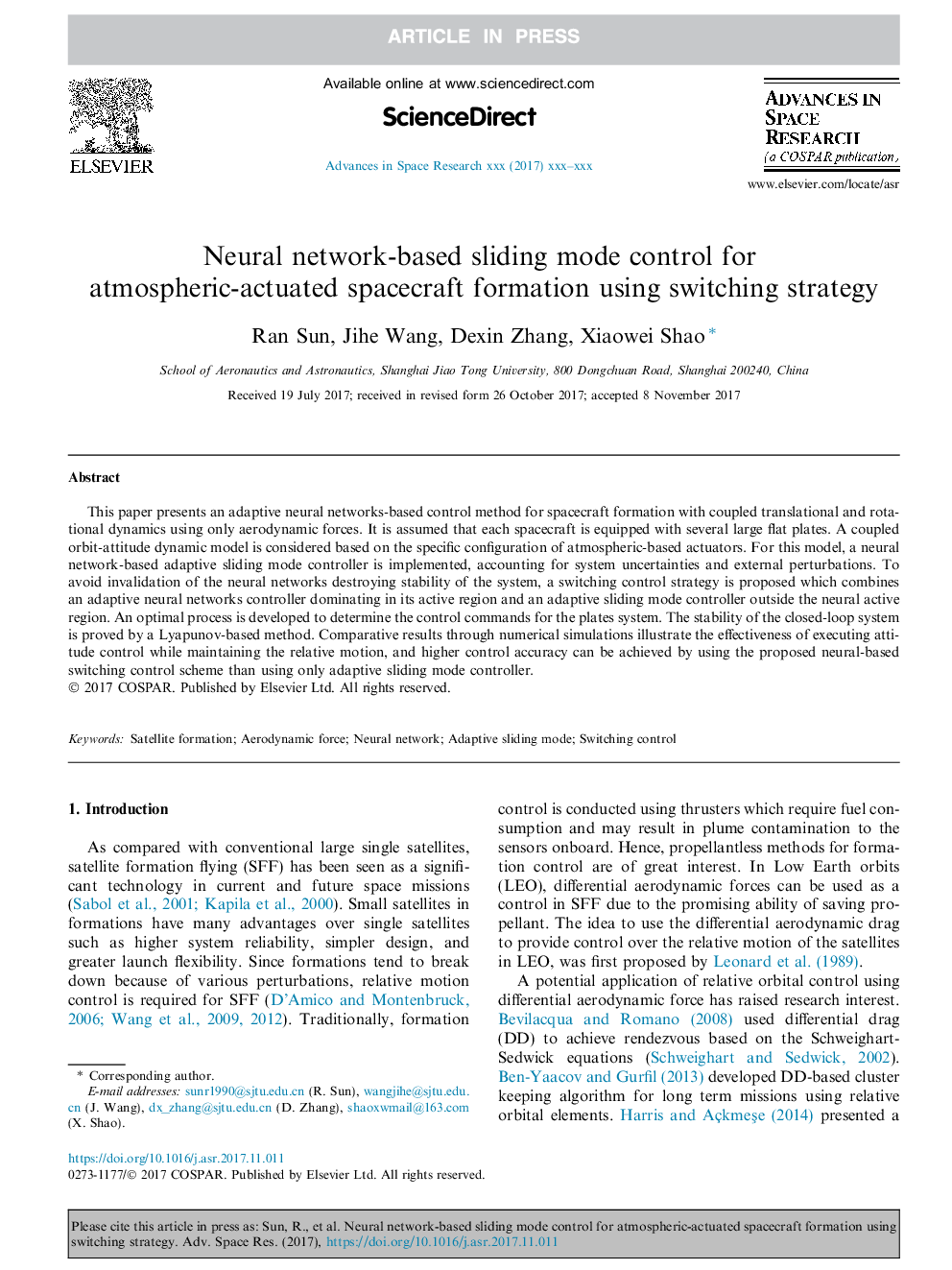| Article ID | Journal | Published Year | Pages | File Type |
|---|---|---|---|---|
| 8132283 | Advances in Space Research | 2018 | 13 Pages |
Abstract
This paper presents an adaptive neural networks-based control method for spacecraft formation with coupled translational and rotational dynamics using only aerodynamic forces. It is assumed that each spacecraft is equipped with several large flat plates. A coupled orbit-attitude dynamic model is considered based on the specific configuration of atmospheric-based actuators. For this model, a neural network-based adaptive sliding mode controller is implemented, accounting for system uncertainties and external perturbations. To avoid invalidation of the neural networks destroying stability of the system, a switching control strategy is proposed which combines an adaptive neural networks controller dominating in its active region and an adaptive sliding mode controller outside the neural active region. An optimal process is developed to determine the control commands for the plates system. The stability of the closed-loop system is proved by a Lyapunov-based method. Comparative results through numerical simulations illustrate the effectiveness of executing attitude control while maintaining the relative motion, and higher control accuracy can be achieved by using the proposed neural-based switching control scheme than using only adaptive sliding mode controller.
Related Topics
Physical Sciences and Engineering
Earth and Planetary Sciences
Space and Planetary Science
Authors
Ran Sun, Jihe Wang, Dexin Zhang, Xiaowei Shao,
